Gamba grass (Andropogon gayanus) transforms ecosystems.
Within a decade of its arrival, a patch of Australian savanna woodland can begin to resemble an African grassland. Gamba grass first displaces the native grasses, creating a four-metre-tall, dense monoculture that burns at up to eight times the intensity of the native grasses. The heat from these fires kills the savanna eucalypts, as the canopy is frequently scorched and charred.
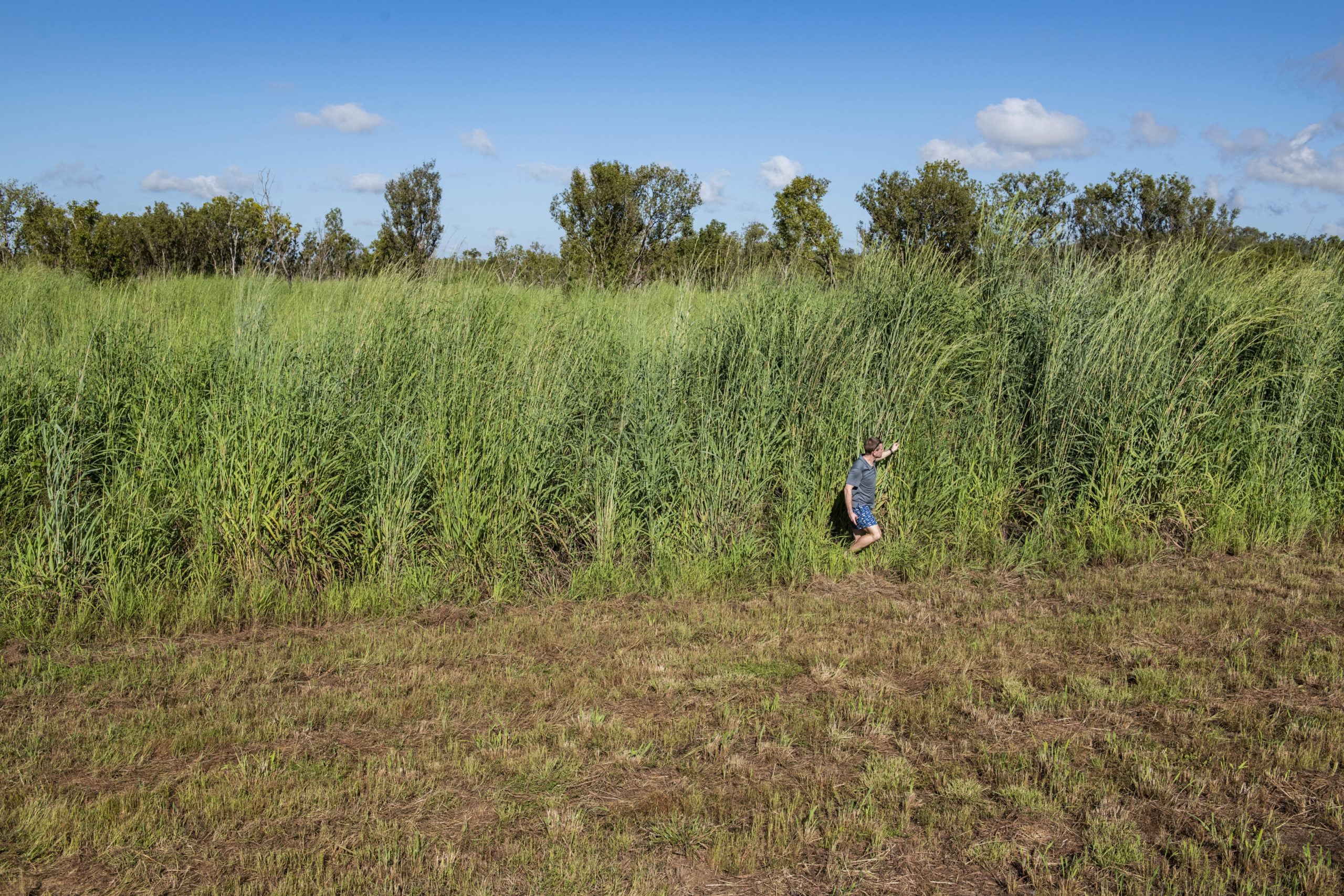
Gamba grass can grow up to four metres tall and completely change native savanna landscapes. Photo by NESP Northern Hub.
Banner photo: Dense stand of gamba in the northern part of Mary River National Park (NT). Photo by NESP Northern Hub.
This savanna transformation is a situation that Mary River National Park rangers knew well. For many years, a northern section of the park was heavily infested with gamba. Each year, early in the dry season, rangers would undertake a program of management burning to safeguard the property to the park’s north from a more devastating late-season fire. Despite their best efforts, the gamba-invaded area of the park began to look degraded. This change was documented by researchers in the NESP Northern Hub who have undertaken research in the park since the 1990s.
Over time, I really noticed the difference that the gamba fires were having, killing the trees. I began to think we could possibly do something differently.
– Senior District Ranger Mr Steve Dwyer
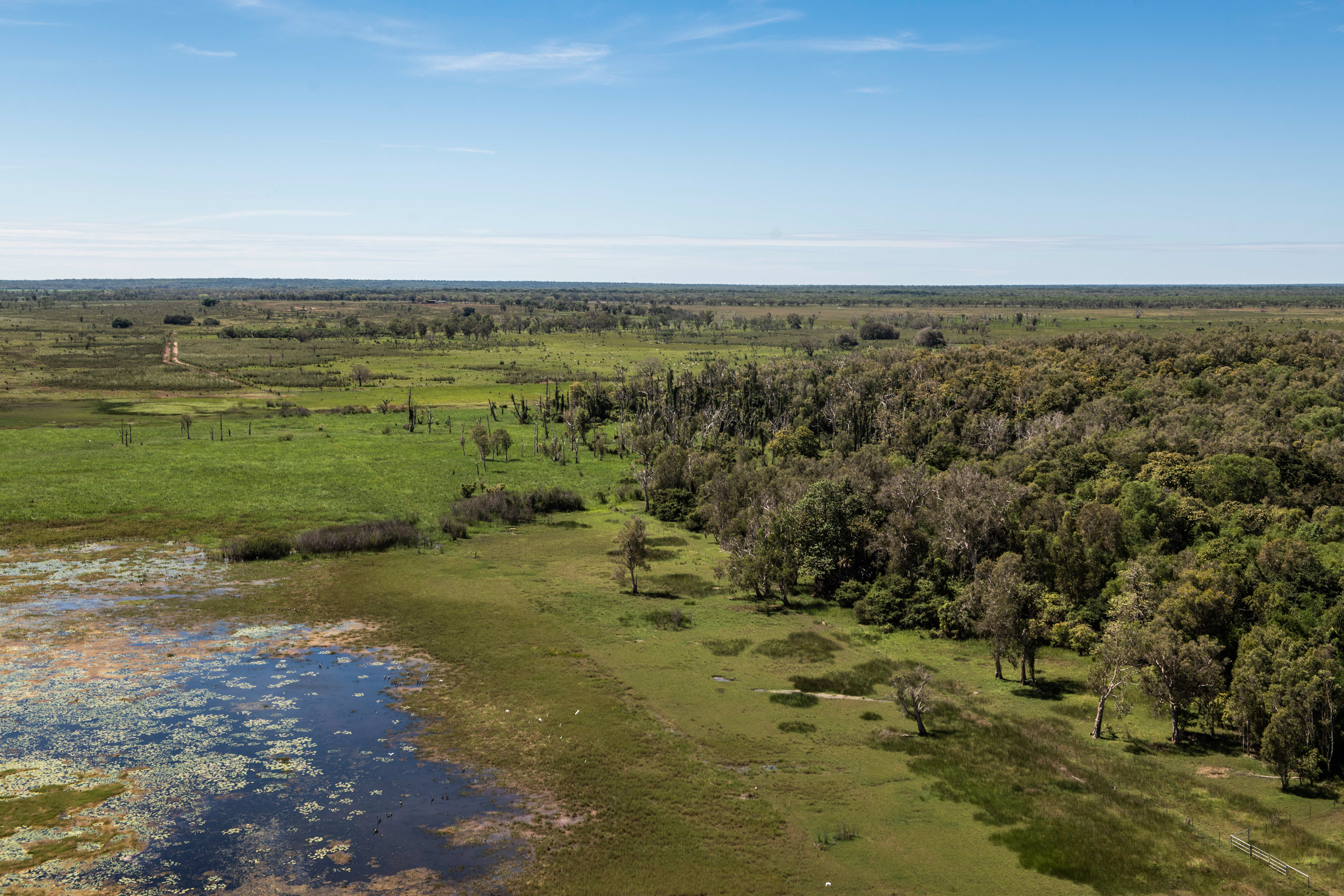
The northern part of Mary River National Park was heavily infested with gamba grass and the Rangers have worked hard to change the situation. Photo by NESP Northern Hub.
Now, after trialling the changed management approaches, research supported by the Australian Government’s National Environmental Science Program has demonstrated the improvement in savanna health in areas invaded by gamba grass.
We thought we might be documenting the degradation of a woodland, but we’re actually seeing something positive and it’s moving in the right direction.
– Steve Dwyer
A partnership between the park rangers, Charles Darwin University’s Dr Natalie Rossiter-Rachor and University of Western Australia’s Associate Professor Samantha Setterfield has shown that a more strategic approach to gamba management, based on the biology of the plant itself, can foster the recovery of healthy native savannas.
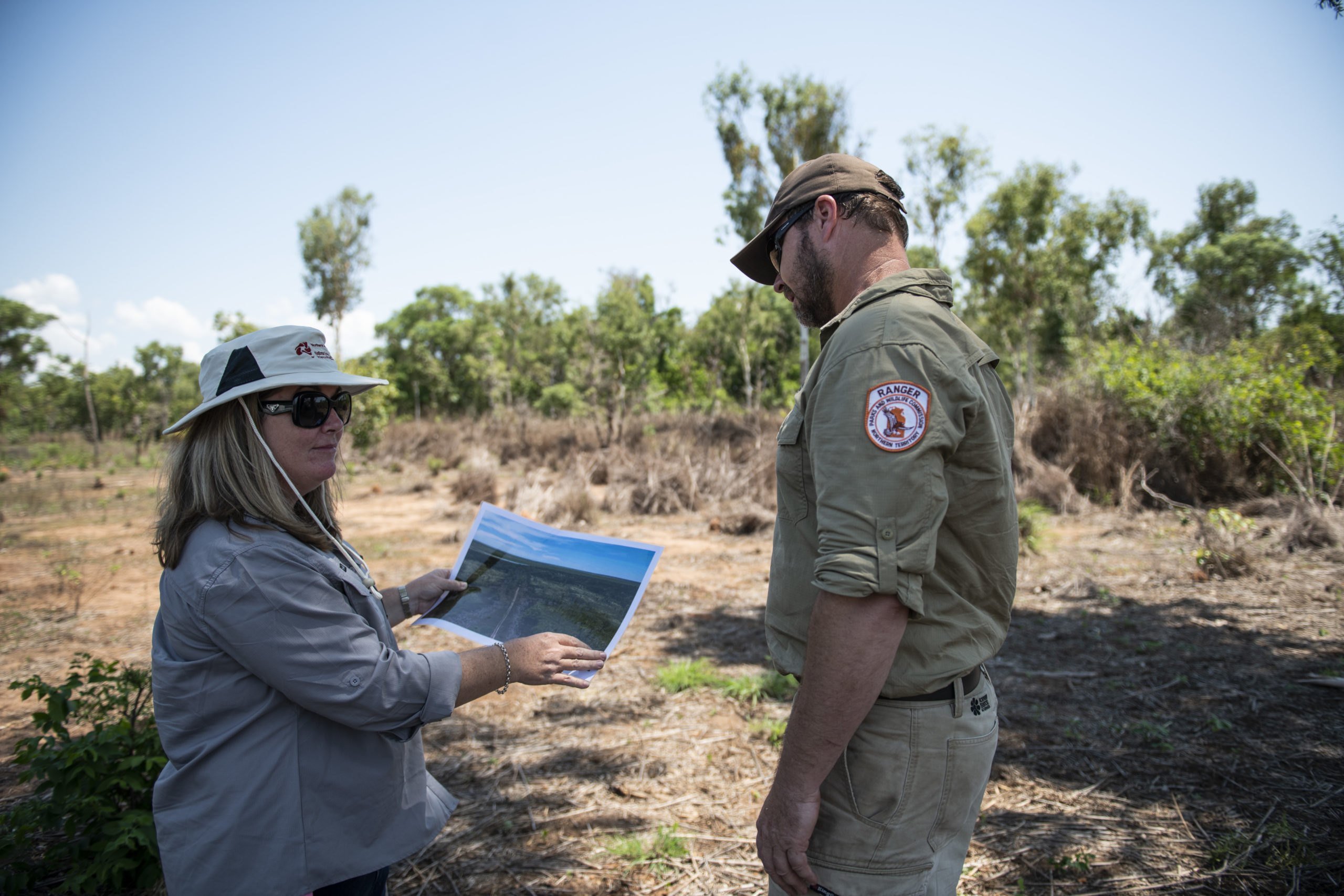
Senior District Ranger Steve Dwyer and project leader Natalie Rossiter-Rachor assess the success of management efforts. Photo by NESP Northern Hub.
The changed approach by park rangers included reducing the frequency of gamba burning. Rangers maintained fire breaks and responded quickly to stop any gamba wildfires that broke out. In the wet season, they sprayed the gamba, focussing on creating a 20-metre-wide buffer along the park’s boundary, and then increased the area sprayed each year.
Excluding fire to protect the tree canopy helped deprive gamba of the resource it’s most hungry for: full sunlight. It also helps maintain a dense layer of leaf litter that inhibits the germination of gamba seeds.
If one of the key aspects for gamba health is fire, then you need to take fire out of the equation. So now, we spray it with herbicide, we exclude fire, we try to get shade back over it because gamba hates competition.
– Steve Dwyer
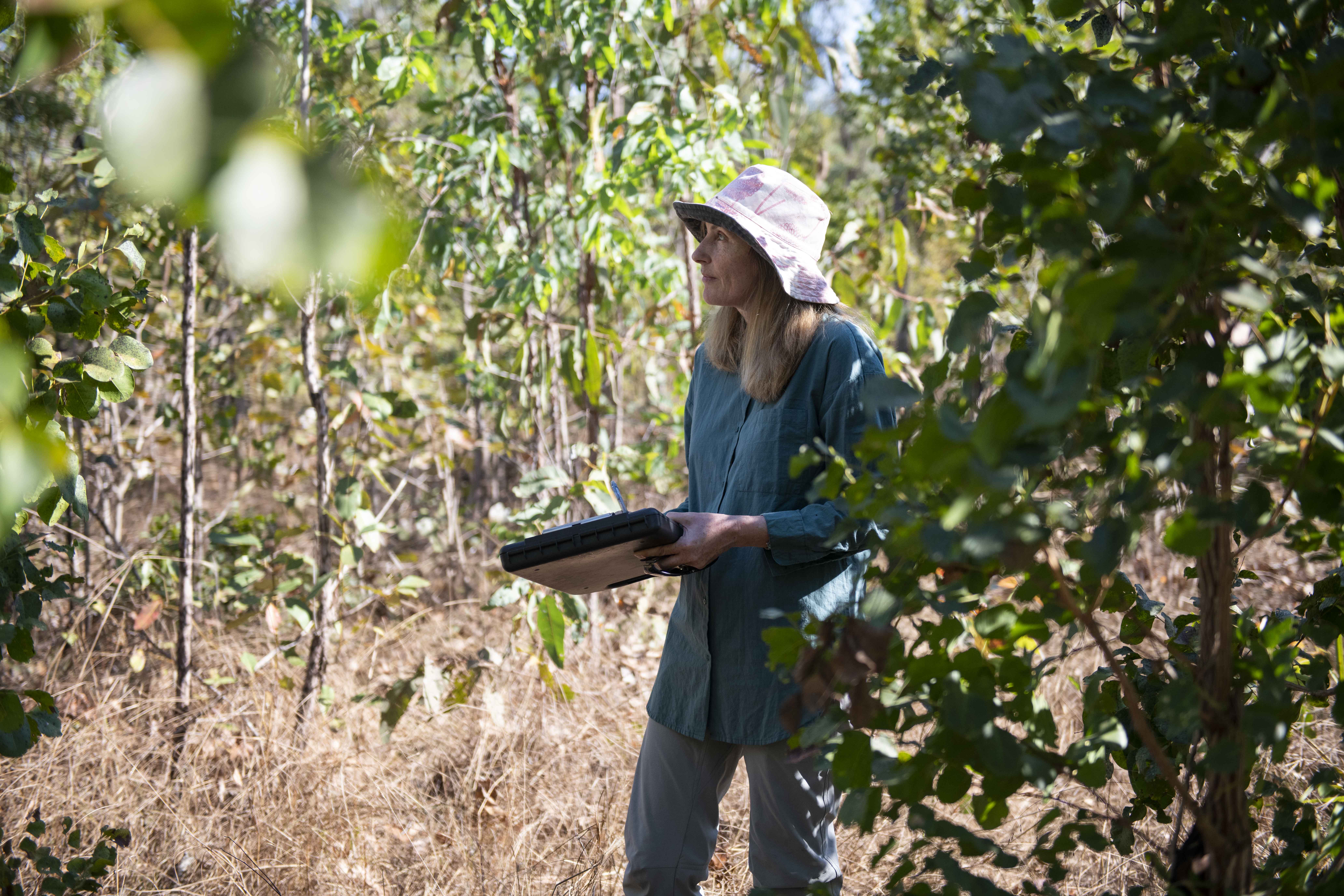
Project leader Samantha Setterfield from the University of Western Australia assessing the condition of savanna in Mary River National Park. Photo by NESP Northern Hub.
The data collected during the research will help inform the integrated conservation strategy for the national park. Mr Dwyer says that having scientific data to quantify the ecological changes that he sees on the ground helps to refine and further develop the park rangers’ annual weed and fire management activities.
The data has also been an important part of the conversation with land managers about possible alternative approaches to gamba management, in locations where similar weed and fire management activities are appropriate.
I can sit in as many meetings as I want and talk to people about it. But to have the data there, the photos there, over time; all of this has been extremely important so that we can put this management in place.
– Steve Dwyer
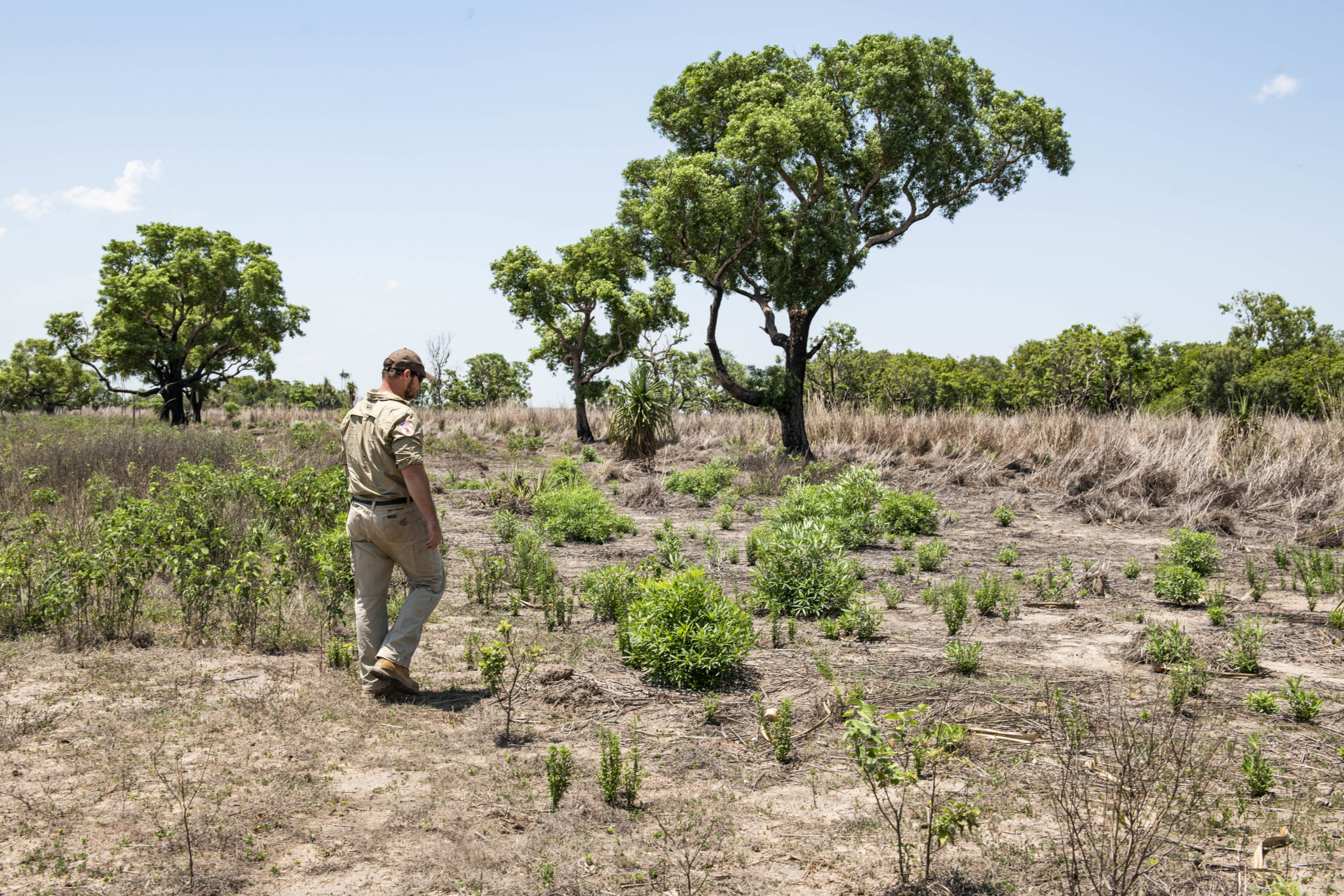
Senior District Ranger Steve Dwyer walks among seedlings of important native seed trees. Photo by NESP Northern Hub.
Research outputs
Scientific papers
Report
Factsheet
Video
Project webpage
Attributions

![]()
